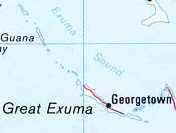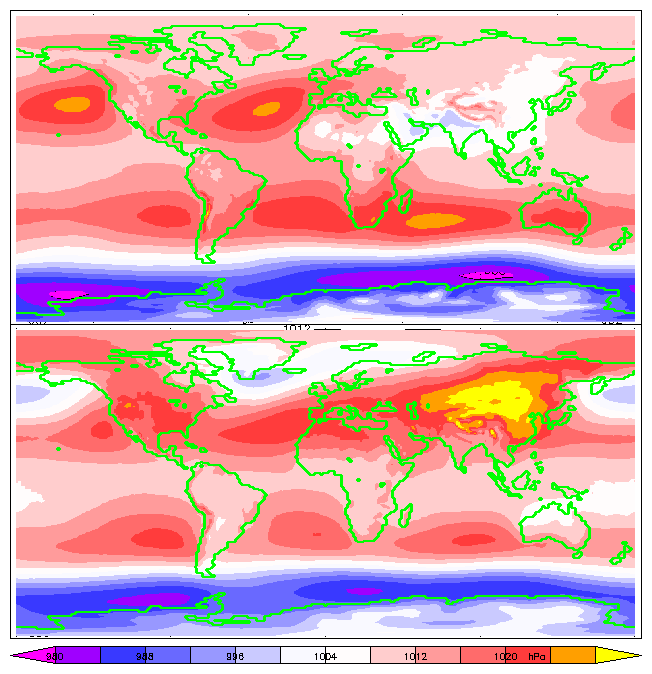|
Tropical Storm Gilda (1973)
Tropical Storm Gilda in 1973 was the first documented tropical cyclone on record to transition into a subtropical cyclone. It formed on October 16 in the western Caribbean Sea from a tropical wave, and strengthened to reach peak winds of 70 mph (110 km/h) before striking Cuba. It later moved slowly through the Bahamas before weakening to tropical depression status. On October 24, with the assistance of a cold front off the coast of the eastern United States, Gilda transformed into a subtropical storm, becoming very large and strong. The storm later accelerated northeastward and became extratropical, ultimately dissipating near Greenland. The storm first brought heavy rainfall to Jamaica, causing six deaths and some damage from mudslides. While crossing Cuba and later the Bahamas, the storm caused little impact, limited to some crop damage. As a subtropical storm, Gilda brought gusty winds and high waves to much of the east coast of the United States, causing min ... [...More Info...] [...Related Items...] OR: [Wikipedia] [Google] [Baidu] |
Jamaica
Jamaica (; ) is an island country situated in the Caribbean Sea. Spanning in area, it is the third-largest island of the Greater Antilles and the Caribbean (after Cuba and Hispaniola). Jamaica lies about south of Cuba, and west of Hispaniola (the island containing the countries of Haiti and the Dominican Republic); the British Overseas Territory of the Cayman Islands lies some to the north-west. Originally inhabited by the indigenous Taíno peoples, the island came under Spanish rule following the arrival of Christopher Columbus in 1494. Many of the indigenous people either were killed or died of diseases, after which the Spanish brought large numbers of African slaves to Jamaica as labourers. The island remained a possession of Spain until 1655, when England (later Great Britain) conquered it, renaming it ''Jamaica''. Under British colonial rule Jamaica became a leading sugar exporter, with a plantation economy dependent on the African slaves and later their des ... [...More Info...] [...Related Items...] OR: [Wikipedia] [Google] [Baidu] |
Coordinated Universal Time
Coordinated Universal Time or UTC is the primary time standard by which the world regulates clocks and time. It is within about one second of mean solar time (such as UT1) at 0° longitude (at the IERS Reference Meridian as the currently used prime meridian) and is not adjusted for daylight saving time. It is effectively a successor to Greenwich Mean Time (GMT). The coordination of time and frequency transmissions around the world began on 1 January 1960. UTC was first officially adopted as CCIR Recommendation 374, ''Standard-Frequency and Time-Signal Emissions'', in 1963, but the official abbreviation of UTC and the official English name of Coordinated Universal Time (along with the French equivalent) were not adopted until 1967. The system has been adjusted several times, including a brief period during which the time-coordination radio signals broadcast both UTC and "Stepped Atomic Time (SAT)" before a new UTC was adopted in 1970 and implemented in 1972. This change also a ... [...More Info...] [...Related Items...] OR: [Wikipedia] [Google] [Baidu] |
Baroclinity
In fluid dynamics, the baroclinity (often called baroclinicity) of a stratified fluid is a measure of how misaligned the gradient of pressure is from the gradient of density in a fluid. In meteorology a baroclinic flow is one in which the density depends on both temperature and pressure (the fully general case). A simpler case, barotropic flow, allows for density dependence only on pressure, so that the curl of the pressure-gradient force vanishes. Baroclinity is proportional to: :\nabla p \times \nabla \rho which is proportional to the sine of the angle between surfaces of constant pressure and surfaces of constant density. Thus, in a ''barotropic'' fluid (which is defined by zero baroclinity), these surfaces are parallel. In Earth's atmosphere, barotropic flow is a better approximation in the tropics, where density surfaces and pressure surfaces are both nearly level, whereas in higher latitudes the flow is more baroclinic. These midlatitude belts of high atmospheric ba ... [...More Info...] [...Related Items...] OR: [Wikipedia] [Google] [Baidu] |
Harbour Island (Bahamas)
Harbour Island is an island and administrative district in the Bahamas and is located off the northeast coast of Eleuthera Island. It has a population of 1,762 (2010 census). - Bahamas Department of Statistics The only town on the island is , named after the governor of the Bahamas from 1786 to 1798, |
Eleuthera
Eleuthera () refers both to a single island in the archipelagic state of The Commonwealth of the Bahamas and to its associated group of smaller islands. Eleuthera forms a part of the Great Bahama Bank. The island of Eleuthera incorporates the smaller Harbour Island. "Eleuthera" derives from the feminine form of the Greek adjective ἐλεύθερος (''eleútheros''), meaning "free". Known in the 17th century as Cigateo, it lies 80 km (50 miles) east of Nassau. It is long and thin—180 km (110 miles) long and in places little more than 1.6 km (1.0 mile) wide. Its eastern side faces the Atlantic Ocean, and its western side faces the Great Bahama Bank. The topography of the island varies from wide rolling pink sand beaches to large outcrops of ancient coral reefs, and its population is approximately 11,000. The principal economy of the island is tourism. Geography and wildlife The name Eleuthera refers both to the single Bahamian island and is also used to refer ... [...More Info...] [...Related Items...] OR: [Wikipedia] [Google] [Baidu] |
Exuma
Exuma is a district of The Bahamas, consisting of over 365 islands, also called cays. The largest of the cays is Great Exuma, which is 37 mi (60 km) in length and joined to another island, Little Exuma, by a small bridge. The capital and largest town in the district is George Town (population 1,437). It was founded 1793 and located on Great Exuma. Near the town, but on Little Exuma, the Tropic of Cancer runs across Pelican Beach lending it another name: Tropic of Cancer Beach. Its white sand and turquoise waters make it a world-famous destination. The entire island chain is 130 mi (209 km) long and 72 sq mi (187 km²) in area. Great Exuma island has an area of 61 sq mi (158 km²) while Little Exuma has an area of 11 sq mi (29 km²). Between 2000 and 2010, the population of Exuma more than doubled, reflecting the construction of large and small resort properties and the related direct air traffic to Great Exuma from locations as distant as Toro ... [...More Info...] [...Related Items...] OR: [Wikipedia] [Google] [Baidu] |
Bar (unit)
The bar is a metric unit of pressure, but not part of the International System of Units (SI). It is defined as exactly equal to 100,000 Pa (100 kPa), or slightly less than the current average atmospheric pressure on Earth at sea level (approximately 1.013 bar). By the barometric formula, 1 bar is roughly the atmospheric pressure on Earth at an altitude of 111 metres at 15 °C. The bar and the millibar were introduced by the Norwegian meteorologist Vilhelm Bjerknes, who was a founder of the modern practice of weather forecasting. The International System of Units, despite previously mentioning the bar, now omits any mention of it.. The bar has been legally recognised in countries of the European Union since 2004.British Standard BS 350:2004 ''Conversion Factors for Units''. The US National Institute of Standards and Technology (NIST) deprecates its use except for "limited use in meteorology" and lists it as one of several units that "must not be introduced ... [...More Info...] [...Related Items...] OR: [Wikipedia] [Google] [Baidu] |
Atmospheric Pressure
Atmospheric pressure, also known as barometric pressure (after the barometer), is the pressure within the atmosphere of Earth. The standard atmosphere (symbol: atm) is a unit of pressure defined as , which is equivalent to 1013.25 millibars, 760mm Hg, 29.9212 inchesHg, or 14.696psi.International Civil Aviation Organization. ''Manual of the ICAO Standard Atmosphere'', Doc 7488-CD, Third Edition, 1993. . The atm unit is roughly equivalent to the mean sea-level atmospheric pressure on Earth; that is, the Earth's atmospheric pressure at sea level is approximately 1 atm. In most circumstances, atmospheric pressure is closely approximated by the hydrostatic pressure caused by the weight of air above the measurement point. As elevation increases, there is less overlying atmospheric mass, so atmospheric pressure decreases with increasing elevation. Because the atmosphere is thin relative to the Earth's radius—especially the dense atmospheric layer at low altitudes—the Earth's gravi ... [...More Info...] [...Related Items...] OR: [Wikipedia] [Google] [Baidu] |
Andros, Bahamas
Andros Island is an archipelago within the Bahamas, the largest of the Bahamian Islands. Politically considered a single island, Andros in total has an area greater than all the other 700 Bahamian islands combined. The land area of Andros consists of hundreds of small islets and cays connected by mangrove estuaries and tidal swamplands, together with three major islands: North Andros, Mangrove Cay, and South Andros. The three main islands are separated by bights, estuaries that trifurcate the island from east to west. It is long by wide at the widest point. Etymology The indigenous Lucayan people called the island ''Habacoa'' (or ''Babucca'') meaning "large upper outer land". Originally named ''Espiritu Santu'' by the Spanish, Andros Island was given its present name sometime early during the period of British colonial rule. Several eighteenth-century British documents refer to it as Andrews Island. A 1782 map refers to the island as San Andreas. The modern name is believed ... [...More Info...] [...Related Items...] OR: [Wikipedia] [Google] [Baidu] |
Ciego De Ávila Province
Ciego de Ávila () is one of the provinces of Cuba, and was previously part of Camagüey Province. Its capital is Ciego de Ávila, which lies on the Carretera Central (central highway), and the second city is Morón, further north. The province was separated from Camagüey Province in 1975 by the government. Geography Off the north coast of the province, some (cays) of the Jardines del Rey archipelago are being developed as tourist resorts, principally Cayo Coco and Cayo Guillermo. The south coast is characterised by mangroves. Between Morón and the north coast are several lakes, including the Laguna de Leche (the ''Lagoon of Milk'', so called for its white appearance because of large lime deposits underwater) which is the largest natural lake in Cuba. Economy Central Ciego de Ávila is used for cattle ranching, elsewhere in the province sugar, pineapples and citrus fruit ''Citrus'' is a genus of flowering trees and shrubs in the rue family, Rutaceae. Plants in the gen ... [...More Info...] [...Related Items...] OR: [Wikipedia] [Google] [Baidu] |
Sancti Spíritus Province
Sancti Spíritus () is one of the provinces of Cuba. Its capital is the identically named Sancti Spíritus. Another major city is Trinidad. Geography The southern coast of the province is flat, but the western portion of Sancti Spíritus province is mountainous. The southeast has numerous mangroves and swamps. The northern coast contains significant wetlands and protected areas such as the Bay of Buena Vista and the Caguanes National Park. The largest man made reservoir in Cuba, the Embalse Zaza, is in Sancti Spíritus province. History During the 17th century, both Dutch and British pirates attempted to take control of what is today Sancti Spíritus province, but with little success, as the Spanish garrison held them off. From 1660 to 1680, Trinidad was plagued by pirates from Jamaica and Tortuga, and on two occasions, pirates razed the city. The provinces of Cienfuegos, Sancti Spíritus, and Villa Clara were once all part of the now defunct province of Las Villas. Economy ... [...More Info...] [...Related Items...] OR: [Wikipedia] [Google] [Baidu] |






